1. General Characteristics.
1. 1. Chronology.
Between the 8th and first century BC.
1. 2. Location.
From the south of the Balkan Peninsula to the western coast of Asia Minor, including some islands in the Egean and Ionian seas. This territoy was called Ellas or Hellada.

1. 1. Chronology.
Between the 8th and first century BC.
1. 2. Location.
From the south of the Balkan Peninsula to the western coast of Asia Minor, including some islands in the Egean and Ionian seas. This territoy was called Ellas or Hellada.

The Balkan Peninsula and Asia Menor has some phisical caractheristics that had a big influence in the greek civilisation:
- Proximity to the sea: Greece developed important commercial activities throughout the Mediterranea region
- Mountanious territory and innumerable islands: Greece were organised in poleis or city-states which never became a unifies states.

Despite their differences all greeks shared several common feautres:
- A common geographical space, Hellas: Its inhabitants called themselves Hellenes.
- A common culture: they spoke Greek and they had the same religion.

1. 5. Timeline.
We can divide the history of the Greek civilisation in several periods of time:
- Minoic civilization 2.000 B. C.-1.600 B. C.
- Mycenian civilization: 1.600 B. C.-1.200 B. C.
- Dark Ages: 1.200 B. C.-800 B. C.
- Archaic Period: 800 B. C.-500 B. C.
- Classic Period: 500 B. C.-336 B. C.
- Hellenistic Period: 336 B. C.-31 B. C.
2. 1. Poleis became organized:
Their main characteristics were:
- A polis consisted of an urban center and the farming land, forest and pastureland that surrounded it.
- Each one had their own laws, government, army and currency.
- They were economically selfsufficient, but some participated in important commercial activities.
- There were more than 200 poleis, the most important ones were Athens and Sparta.
- We can distinguish two main parts in a polis:
- Agora or main square was located In the lower part, where the population lived.
- The acropolis:Upper city, with numerous temples. It was a safe place against an invasion.
During the Archaic period greeks migrated migrated away from their original city-states, metropolis, to the coasts of Black Sea and the Mediterranean sea. The most important colonies were:
- Italy: Syracuse, Tarentum
- France: Massalia.
- Iberian Peninsula: Emporion
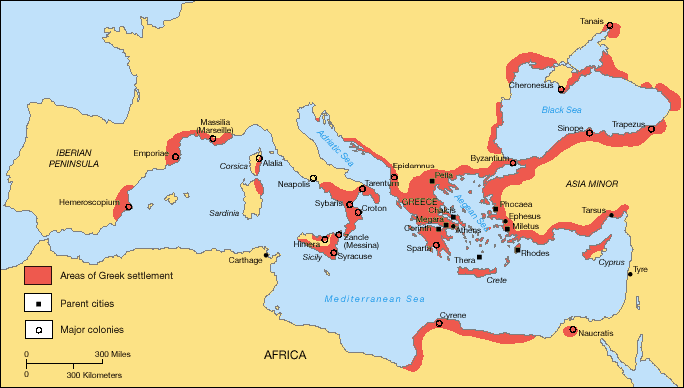 |
| Greek colonization. |
- The poor distribution of land and their limited capacity.
- There was not enough food for all the population
Characteristics:
- Colonies were located at advantageous sites for trade and agriculture.
- Were organised according the Greek social structure and customs.
- Maintained close relationships with the city of origin of the colonisers (metropolis).
Consequences:
As a consequence greek culture spreaded and some technological advances:
- Use of iron
- Money
- The alphabet
- Its art and architecture
Its main characteristics were:
- The greatest period for the Greek poleis.
- Sparta and Athens were the most important polis.
- The 5th century is known as the Age of Pericles, the politician that governed Athens for 31 years, and one of the fathers of democracy. During his goverment Athens produced very important thinkers and artists such as: Socrates (philosoper), Dramatists (Aeschylus, Sophocles, Euripides) and artists (Phidias).
Chronology:Beginning of the 5th C
Cause:The Persians tried to gain control of the Greek poleis of Asia Minor and continental Greece.
As a consequences of these wars, Athens became the most powerful polis because its army was essential in defeating the Persians in the battles of Marathon (490 BC) and Salamis (480 BC).
Furthemore, The Delian League was created (477 BC) by Athens, a military alliance between poleis led by Athens to prevent Persians attacks.
3. 2. Peloponesian War (431-404 BC):
Causes; conflicts between Greek poleis:
Causes; conflicts between Greek poleis:
- The dominant position of Athens threatened other poleis and led to wars between them.
- Athens made other poleis that belonged to the Delian League pay high taxes and took the League’s treasure.
- Sparta was against this control.
- After years of war Sparta dominated over the rest of the poleis.
- While the poleis were fighting, king Philip II of Macedon organised a great army.
- By 338 BC, Philip II dominated all the Greek, except for Sparta.
4. Hellenistic period (336-30 B.C.).
4. 1. The Empire of Alexander the Great.
Origin:The son of Philip II, Alexander the Great, (356-323 BC), continued the territorial expansion:
- He unified the Greek poleis to confront a common enemy,: the Persian empire.
- He created a great empire from the Mediterranean to the Indian frontier.
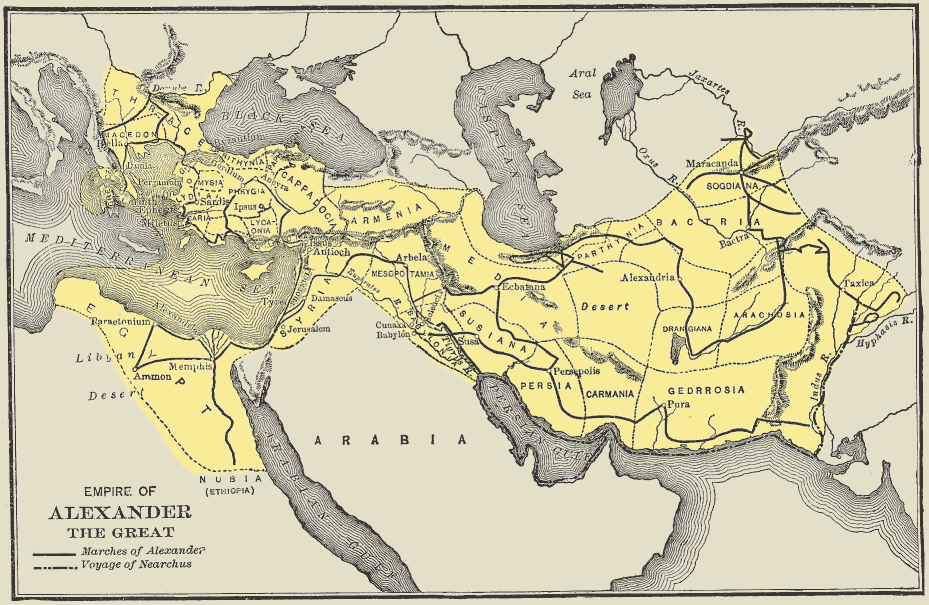 |
| Empire of Alexander the Great. |
When Alexander died, his generals divided the empire among themselves and created the Hellenistic monarchies with two main characteristics:
- Were absolute monarchies: the king had all the powers.
- Spreaded the Greek culture and art throughout the East: Hellenism.
They were conquered by the Roman empire, and with the conquest of the Ptolemaic Egypt (30 B. C.), ended the Greek civilization.
 |
| Hellenistic kingdoms. |
ANCIENT GREEK: POLITICS, SOCIETY AND ECONOMY
1. POLITICAL ORGANISATION
Archaic period:
Oligarchy: Power was held by a few privileged men who called themselves aristoi, “the best”. The word aristocracy comes from aristoi.
Classical period:
Archaic period:
Oligarchy: Power was held by a few privileged men who called themselves aristoi, “the best”. The word aristocracy comes from aristoi.
Classical period:
- Athens established a democratic form of government (only adult males could vote). The cause was the colonization process which increased the wealth of less privileged groups (traders, artisans and peasants) who demanded political rights.
- The Assembly (Ecclesia) which made up of free men aged over 18 who were sons of Athenian fathers and mothers. Its main duties were to discuss and vote on laws, decide about war and peace and chose magistrates.
- The Council of 500 (Boule), propossed annualy by lot among the members of the Assembly. Its main function was to draft the laws to be discussed by the Assembly.
- The Magistrates, elected annualy by the Assembly. Its main function was to rule: 9 arcons (civil functions) and strategos (military).
- The People's tribunals (Helalia), its members were propossed annualy by lot.
- Sparta kept the oligarchical system. Sparta was a dual monarchy (two kings), but they only had honorific and military responsabilities.
The main political institutions of Sparta were:
- The Assembly (Apella) which was made up of men who were sons of Spartan fathers aged over thirty. Its only function was to vote yes or no to the laws.
- The Council of Elders (Gerosusia) which was made up of 28 aristocrasts aged over 60. Its function was to draw up the laws and present them to the Assembly.
- Five Magristrates (Ephors) ellected by the Assembly. Its function was to monitor citizens' private life and the kings' decisions.
======================================
WARNING! AS I SAID IN CLASS, SADLY, THIS PART IS NOT GOING TO ENTER IN THE EXAM. READ IT AT YOUR OWN RISK...the risk of know more about yourself, about who we are and our origins. Or even better read an Aristophanes' comedy, an Euripides' tragedy, a book about the Alexander's expeditions...or better not. Read a child's version of the Odissey, watch a video about the greek miths or about greek art. I'm sure that you are going to enjoy it.
2. ECONOMIC ORGANISATIONThe main economic activities were:
- Agriculture: It was the basis of Greek economy. The main crops were that of the Mediterranean triad: vines, olives and cereals.
- Farming: Goats and sheep
- Crafwork: Pottery, glass and high quality textiles
- Comerce: Manufactured and agricultural products.
3. SOCIETY.
In ancient Greece people was divided into two categories:
- Citizens, free males whose parents, or just one of them (Sparta), had been born in the polis:
- They could take part in political life.
- They have to pay taxes and serve in the army.
- Non-citizens, could not participe in political life. Consisted of:
- Foreigners or metics, they were freemen who worked in trade of manufacture.
- Slaves, prisoners of war and individuals who could not pay their debts.
- Women, they had no political rigths.
3. 1. Olimpic gods:
- Ancient Greeks were polytheistic: they had many gods.
- Gods had the same appearance and sentiments as humans, but they were inmortal and had exceptional powers.
- They also believed in heroes: born of a deity and a mortal that could do incredible deeds.
- The tales of gods and heroes are known as mythology.
- Greek religion was adopted by the Romans, who changed gods’ names.
- The main gods were:
- Zeus/Jupiter (roman name): The ruler of Mount Olympus.
- Hera/Juno: Goddess of the home.
- Hades/Pluto: God of Hell.
- Demeter/Ceres: Goddess of agriculture and fertility
- Ares/Mars: God of war.
- Artemis/Diana: Goddess of hunting
- Apollo: God of love, poetry and beauty
- Athena/Minerva: Goddess of wisdom
- Hermes/Mercury: God of travel and routes. The mesenger of the gods
- Dionysus/Bacchus: God of wine
- Aphrodite/Venus: God of love and beauty.
3. 2. Religious worship.
The main elements of the religious worship were:
- Prayers, offerings, and animal sacifices in the temples.
- Oracles which gave the answers of the God's to human questions.
- Games of sporting competitions, festivals dedicates to the gods. The most important took place in Olympia in honour of Zeus.
Greek culture has been the fundation of Western culture. The most important cultural figures were:
- Science: Pythagoras (maths), Archimedes (physics) and Hypocrates (medicine).
- History: Herodotus.
- Philosophy: Socrates, Plato, Aristotle.
GREEK ART.
1. Architecture.
Characteristics:
Characteristics:
- They designed buildings to a human scale.
- They used stone and marble.
- They had columns and a double-sloped roof.
- They introduced orders, column arrangements, that aimed for proportion and ideal beauty. There were three: doric, jonic and corinthian.
- There were two main types of buildings:
- Temples: The house of a particular god. Inside, there is a statue of the god. The parts of the greek temple were:

- pronaos, a vestibule.
- naos, the main room where the god's statue was located.
- opisthodomos, another room where the offerings made to the god were kept.
- Theatre:was used for the performance of theatre plays and was built to the advantage of mountain slopes.
- About the materials, first the used wood, later polychrome marble, bronze and sometimes, ivory and gold.
- Tried to achieve idealised beauty, using a canon, a set of proportions applied to the human body.
- Great variety of subjects: gods, heroes, athletles, religious scenes and battles.
- We can distinguish several periods:
- Archaic: Rigid figures and almond-shaped eyes: Kouroi, Male naked athletes; Kouroai: Dressed females.
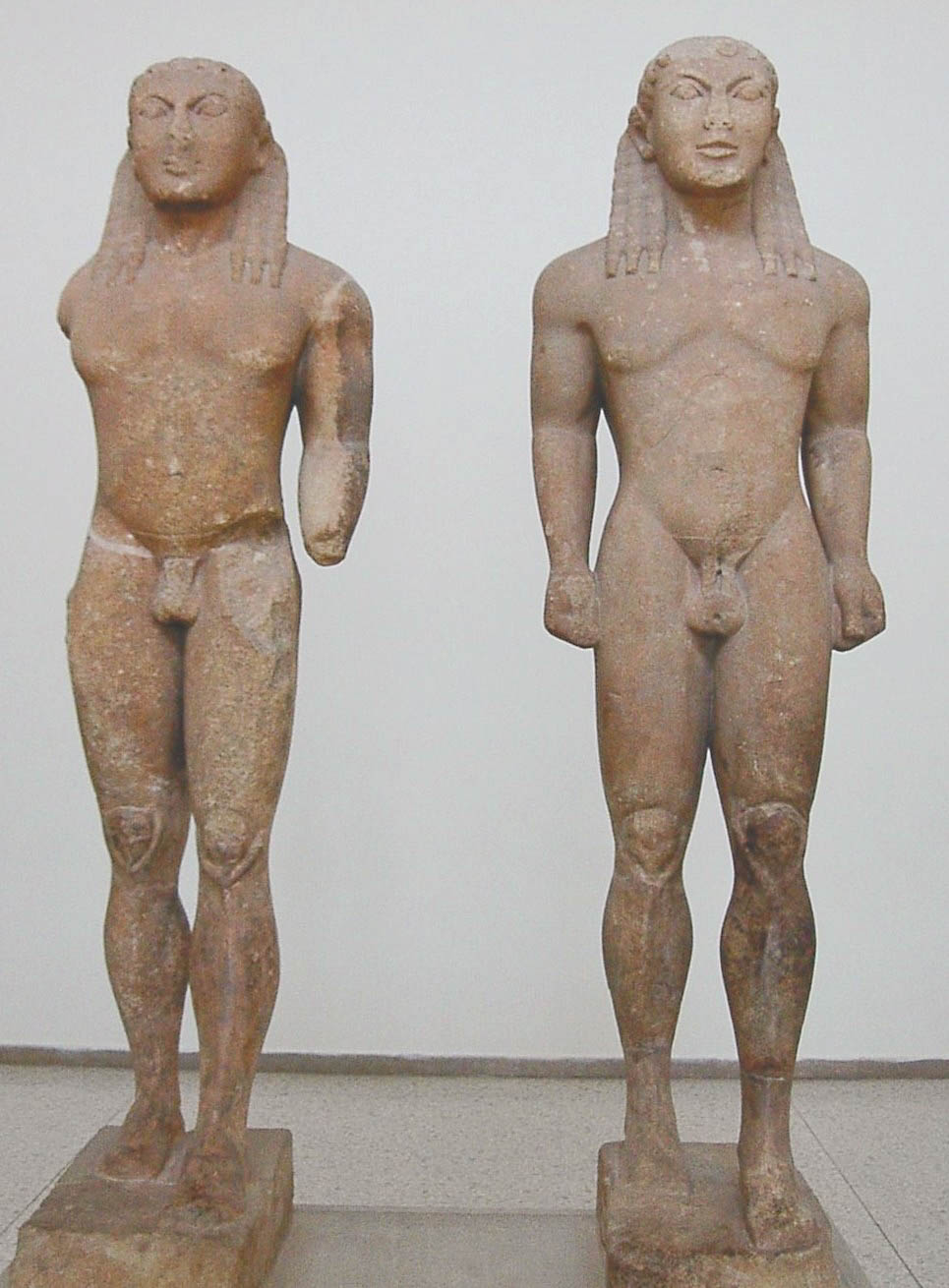
- Classical period: Figures in movement, more realistic but still idealised. Examples: Dyscobolus, Myron, Relief of The Parthenon and Athena, Phidias.
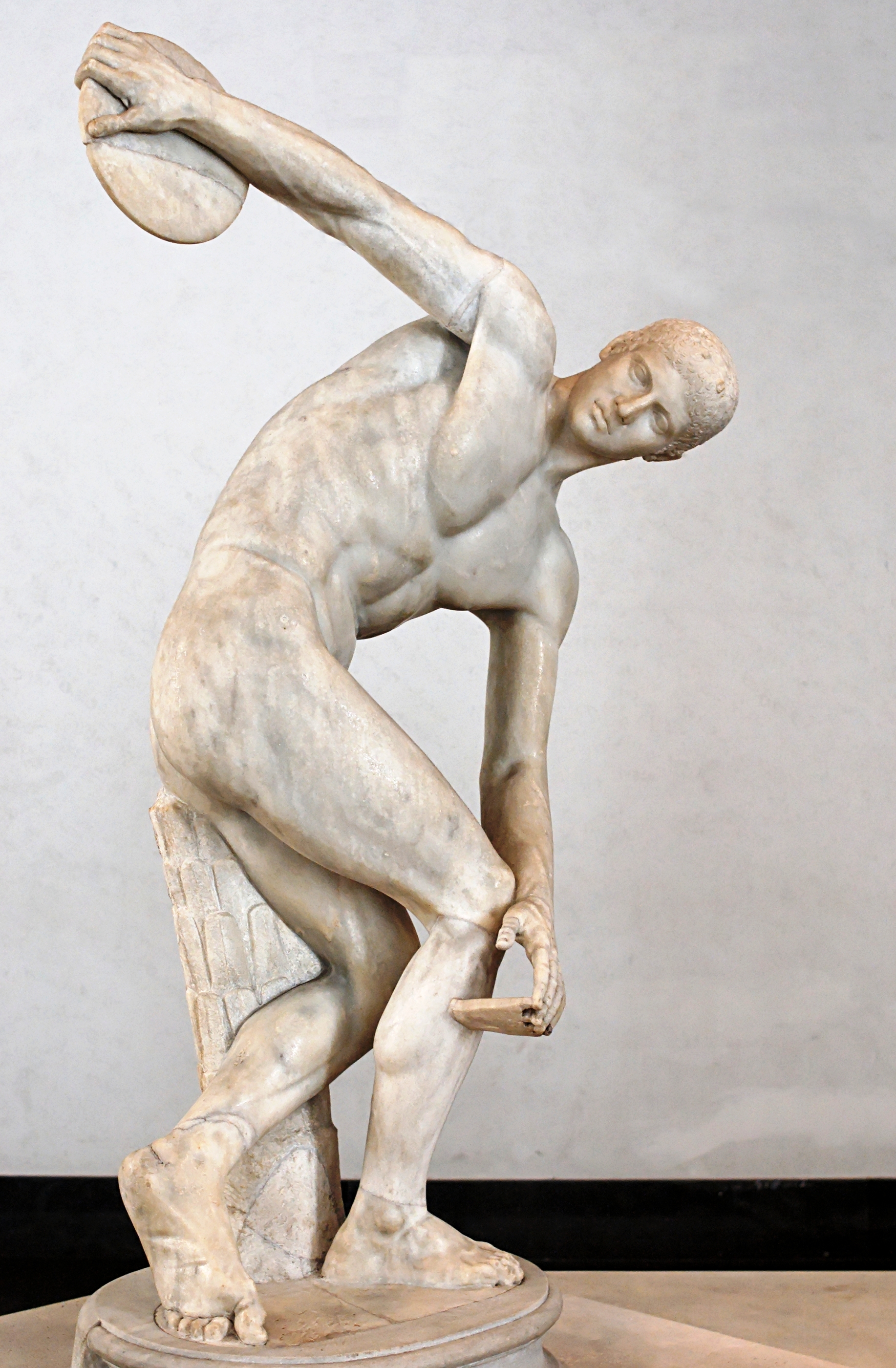
- Hellenistic period: They represented movement and expressions of feelings in faces and bodies. Examples: Laocoön and Winged Victory of Samothrace.
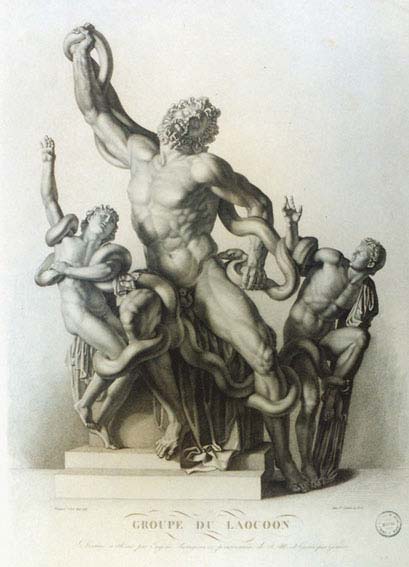
-

3. Pottery.
Characterised by a great variety of forms for every sort of use: storing grain, transporting water and mixing wine and water, etc.
In Athens there were two types according its decoration:
- red figures painted on a black background.
- black figures painted on a red background.






No hay comentarios:
Publicar un comentario